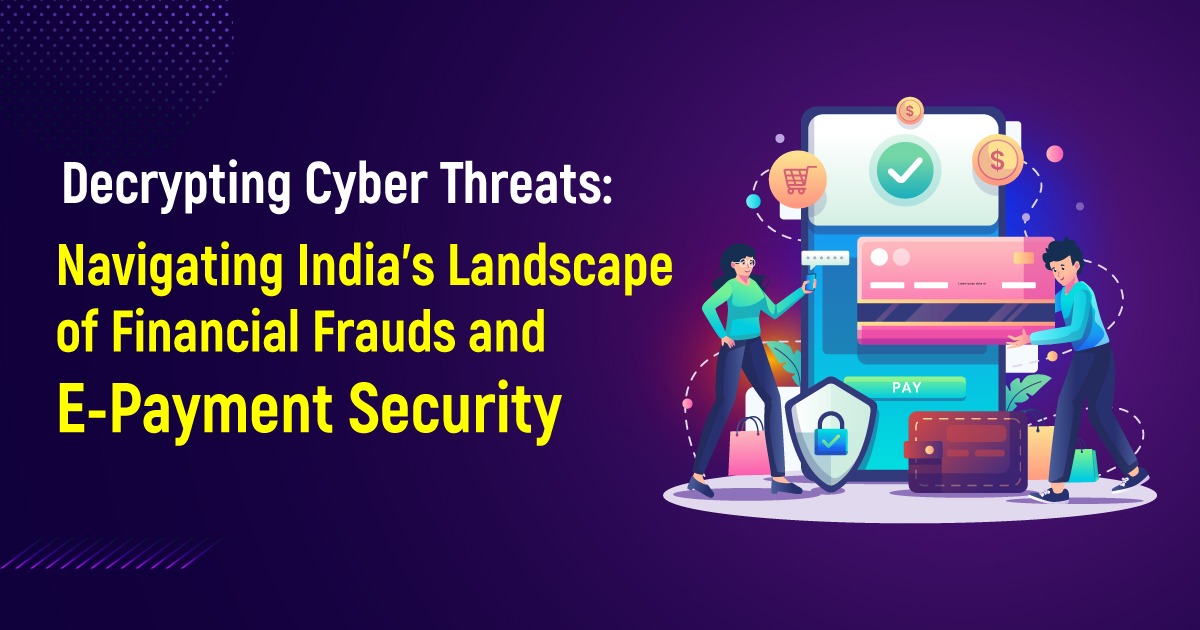A recent study conducted by an IIT Kanpur-incubated start-up revealed alarming statistics, revealing that financial frauds accounted for a staggering 75% of cyber crimes in India from January 2020 to June 2023. In this period, a concerning 50% of cases were directly linked to UPI and Internet banking, showcasing a critical vulnerability in online financial transactions.
Navigating the Expansive E-Payment Terrain
The rise of digital connectivity has broadened the range of attacks for cyber adversaries targeting e-payment platforms and gatekeepers of financial transactions. From phishing exploits to ransomware, threats are multifaceted and constantly evolving. Countering these threats requires a deeper understanding of the security landscape.
Financial Frauds and the Dominance of Online Transactions
Research by the Future Crime Research Foundation (FCRF) highlights the dominance of financial fraud, including fraudulent activities involving online financial transactions. UPI fraud alone contributed significantly (47.25%), indicating an urgent need for strong cybersecurity measures to protect digital financial transactions.
Social Media-Related Crimes and Diverse Cybercrime Categories
Besides financial fraud, the study examines in detail social media-related crime, which accounts for 12.02% of online crime. Crimes such as imitation fraud, cyberbullying, and email phishing are prominent subcategories in this area, highlighting the multifaceted nature of cyber threats.
Hacking and Damage to Computer Systems: An Ever-Present Threat
The FCRF’s white paper shows continued concern, as 1.57% of cybercrime involves hacking or compromising computer systems. Unauthorized access, data breaches, email hacking, website vandalism, or hacking refer to the various methods used by cybercriminals to target digital systems.
A Unified Call to Action Against Emerging Threats

In light of these findings, FCRF emphasizes the urgent need for concerted efforts by law enforcement agencies, businesses, the private sector, and policymakers to combat the growing cyber threats in India. As technology evolves, so do the tactics of cybercriminals, making it important for all stakeholders to remain informed and vigilant.
The statistics underscore the urgent need for a comprehensive cybersecurity strategy, not only to protect financial transactions but also to strengthen digital infrastructure against ever-changing cybercrime. India needs to be proactive in adapting to emerging security trends and ensuring a secure and robust future in the face of serious cyber threats.
Safeguarding Seamless Transactions: The Performance Monitoring Advantage
Either delay or disruption in the speed of e-payment can be detrimental. Monitoring tools actively monitor the performance of all infrastructure, ensuring a smooth process while quickly identifying and fixing operational problems.
The Convergence: Observability and Security Information
Combining security information and event management (SIEM) monitoring capabilities allows security incidents to be detected and responded to. By linking security events with system-wide data, SIEM provides a comprehensive overview, making it easier to identify potential threats.
Real-Time Defense and Observability
The real-time capabilities of visualization allow organizations to detect and respond to events as they happen. By providing consistent data, security teams can quickly identify abnormalities, enabling them to take immediate action to minimize potential damage.
Future-Proofing E-Payment Security: Adapting to Emerging Trends
In the ever-changing cybersecurity landscape, the constant challenge remains threats. Observability, dynamically and adaptively, positions e-payment platforms for evolving with emerging security trends. Whether it’s quantum computing or the emergence of new attack vectors, the ability to observe allows organizations to prepare to better engage their defenses.












